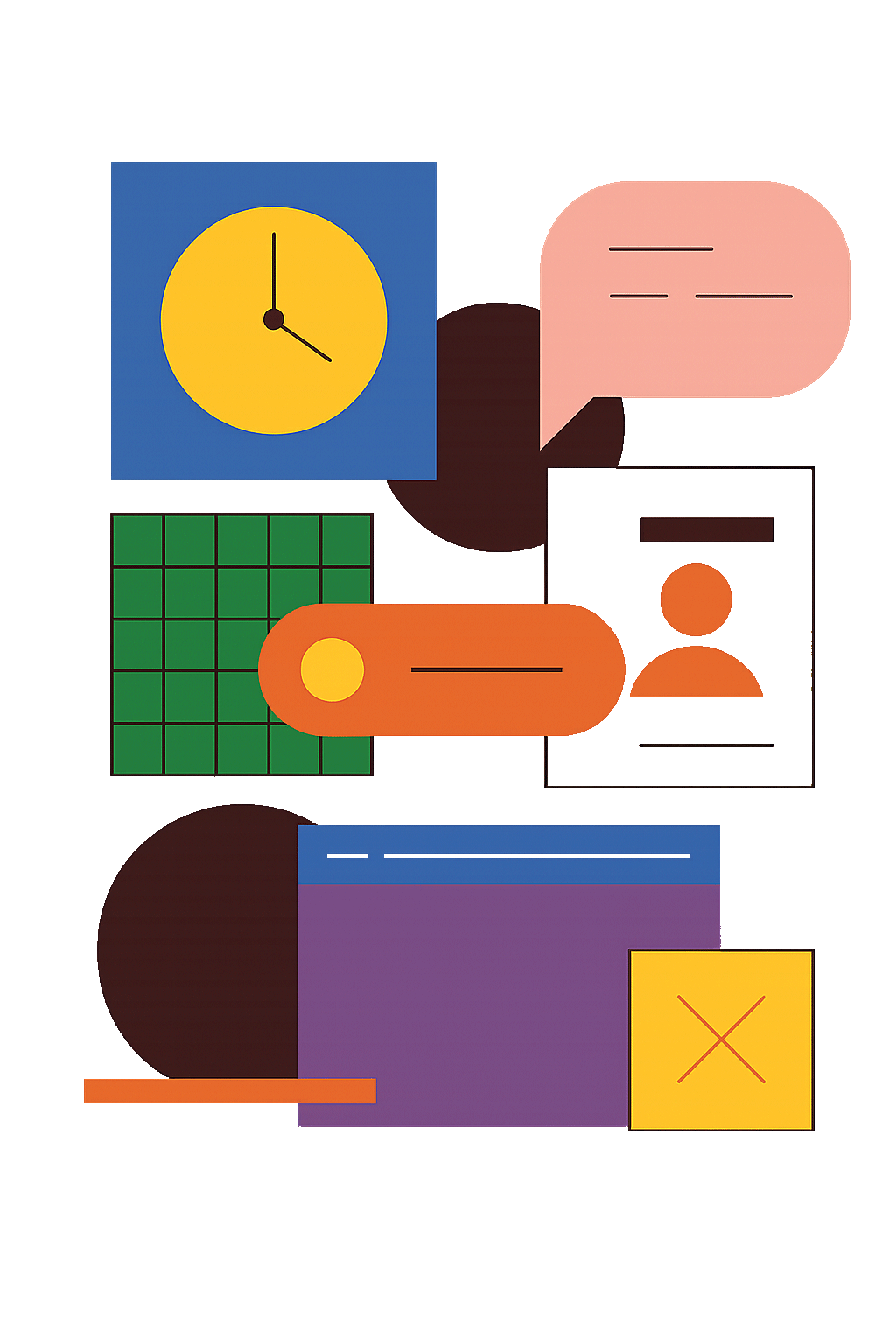Bridging the gap between design and development
There’s a particularly delicate moment in any digital development: the handoff from design to the final product.
This transition doesn’t have to be problematic — if there’s coordination. But when design and development aren’t aligned, the result gets distorted.
What looked pixel-perfect, balanced, and clear in Figma ends up implemented with misalignments, imprecision, and a handful of small inconsistencies.
And then it happens: the client finds themselves playing spot the difference between what they approved and what’s on the screen… except this time, it’s not just seven differences.
Buttons don’t align, margins shift unpredictably, bold text screams louder than intended, and responsiveness seems to have a life of its own.
What looked professional and polished ends up undermining the work of the entire team.
A poor distribution of roles
For years, it’s been assumed that design and development are sequential phases: the designer finishes and hands off, the developer interprets and builds. But that model doesn’t hold up for complex products, agile teams, or companies that want to iterate and learn quickly.
UX and development aren’t separate “departments” working in shifts. They’re parts of the same process — and the sooner they start collaborating, the less friction there will be down the line.
When do we know there’s a problem?
- When the design and the visual implementation don’t match — and no one knows whether it’s a mistake or a technical decision.
- When multiple versions of the same design file exist, and it’s unclear which one is the source of truth.
- When feedback arrives too late, and fixing things means discarding hours of work.
- When states, transitions, or accessibility aren’t considered — neither in the design nor in the development phase.
How do we bridge that gap?

Our way of working between design and development didn’t happen by chance.
It’s the result of direct experience, many projects, and a clear decision: we didn’t want the work to get diluted or reinterpreted in the final stretch.
We’ve seen —and experienced— what happens when teams aren’t aligned: off-track deliveries, misunderstood features, and interfaces that don’t reflect the original intent. And we quickly realized that model wasn’t sustainable.That’s why we built a different approach: collaborative, continuous, and cross-functional.
One where design and development stop being separate phases and become part of the same process.
Because a good idea deserves to reach the product in full — and that only happens when teams build together from day one.
And we keep refining. Even though we work much more cohesively today, every project still teaches us something new. And that’s exactly what keeps us improving.
Algunas cosas que sí nos funcionan
1. Continuous synchronization: daily + phased meetings
You don’t need endless meetings — but you do need to stay in sync. A well-structured daily helps align priorities, and short meetings focused on features or phases help avoid misalignment.
Design and development should be clear on what’s being done and why, even before starting.
2. Reviewing functionality together
Before designing or developing, we review functionality with representatives from both teams — usually the design and development leads involved in that block.
We analyze the flow, possible roadblocks, and sensitive points. Understanding what’s being built prevents misinterpretation and wasted effort. It’s not documentation, it’s conversation.
3. Interactive prototypes, also for the client
It’s not just about showing screens. We use interactive prototypes in Figma that simulate real interface behavior: flows, transitions, states.
They help align the team internally and also ensure the client clearly understands what they’re getting — without having to imagine it.
A shared, interactive design is far more effective than any functional document.
4. Designing with intent, not just style
Design shouldn’t stop at aesthetics. It must clarify how the interface behaves in real conditions: what happens if content expands, if something breaks, or if the user makes a mistake.
Without that context, developers are forced to guess — and that almost always ends badly.
5. Shared, realistic, and reusable components
We design using systems connected to the codebase. This allows us to work with real components, test different states, and maintain visual consistency effortlessly.
If it can’t be tested, it’s not well defined.
6. Progressive validation
We review development as it happens — not just at the end. We show partial progress, even when it’s not polished, because fixing early is always cheaper than redoing everything later.
It’s collaborative validation, not just final-stage QA.
7. A unified voice in front of the client
Design and development communicate the same message. No mixed versions, no contradictory answers.
When the team is aligned internally, the client feels it externally. And that builds trust.
Helpful tools
- Figma / Zeplin / UXPin Merge: To ensure that what’s designed can actually be built and maintained.
- Storybook / Codux: To view the design in its real, navigable, and testable version.
- Slack / Notion / Loom: To document decisions, share ideas, and avoid misunderstandings — especially when working remotely.
In summary
A design isn’t something you hand off. It’s something you build. Visual and functional aspects are two sides of the same coin — and any excessive separation between them is a likely source of errors and frustration.
At WonderBits, we believe in working together from day one. Because when design and development collaborate seamlessly, we don’t just gain time and quality — we build more coherent, maintainable products that are made to last.
_Discover our projects where design and code go hand in hand.